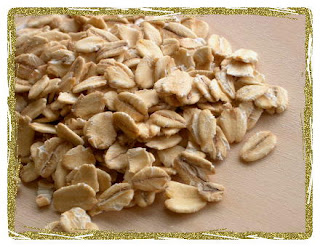 Good Fats
Good Fats
Fat
is an important aspect of a healthy diet. When eaten correctly fat provides our
bodies with the building blocks for cell membranes and many important hormones.
It is essential in order for our bodies to absorb fat soluble vitamins from
foods, such as vitamin A, D, E, and K.
Saturated Fats
Saturated
fats are found in foods such as meat, poultry, eggs, dairy, and tropical oils
such as, coconut and palm oil. A fatty acid is considered to be saturated when
all the available carbon bonds have been occupied by a hydrogen atom. This
configuration makes saturated fats highly stable and less likely to become
rancid, even during cooking. Saturated fats are found to be solid or semi-solid
at room temperature.
Our bodies need saturated fat, hence the reason why our bodies can make it from carbohydrates. Saturated fats make up around half of the membrane
structure in our cells, giving the cells the stiffness and integrity that they need to function properly. They are also important for bone and immune health, on top of many other benefits.
Polyunsaturated Fats
Polyunsaturated
fat is found primarily in vegetable oils such as in soy, sesame, sunflower,
safflower, corn, cottonseed, or in peanuts, seeds, nuts and margarine. Not all polyunsaturated fats are
healthy. Fats found in margarine, hydrogenated
vegetable oils, processed foods, bakery goods and fried foods can be hazardous
to your health.
Polyunsaturated
fats lack four or more hydrogen atoms, which are replaced by two or more pairs
of double bonds. The double bonds cause bends in the structure of the fat,
making them hard to pack together, resulting in a liquid even when
refrigerated. These oils are highly
reactive so they should never be used in cooking and should stay refrigerated.
The
most common polyunsaturated fats found in the diet is linoleic acid, which
contains two double bonds and is called an Omega-6 fatty acid and linolenic
acid which contains three double bonds and is called an Omega-3 fatty acid.
Both Omega-6 and Omega-3 are considered “essential” since our bodies can not
make them and they must be obtained from our diet. Many health care professionals
will recommend a 4:1 ratio of Omega-6 to
Omega-3, but if you are trying to follow in your primal ancestors’ footsteps stick
to the 1:1 ratio.
Omega-3 fatty acids are very protective
to the heart and are a necessary component to any healthy diet. The three forms of Omega-3: ALA (found in flax) and EPA and DHA (found in fish) aide in reducing inflammation, are important for brain function, thin the blood, as well as a host of other health promoting properties (depression anyone?). The best sources of Omega-3’s are: Fish, fish oil, flaxseed, flaxseed oil and
chia seeds.
Omega-6 fatty acids are found in most
polyunsaturated oil sources: Safflower
oil, peanut oil, sesame oil, walnut oil, canola oil. The best sources are: Sesame oil, walnut oil, grapeseed oil,
almond oil.
The
real problem with polyunsaturated fats is that they are unstable and are easily
oxidized. This can promote the
production of free radicals and inflammation.
If you eat a diet extremely high in
polyunsaturated fats, you can load yourself with free radicals. Heating
these fats accelerates the formation of free radicals.
Monounsaturated Fats
These
are the Omega-9 fatty acids. They are
not essential fats. The most common
monounsaturated fatty acid in our diet is oleic acid, which is the main
component of olive oil, and is found in the almonds, macadamia nuts, avocadoes,
cashews, and pecans. Monounsaturated fats lack two hydrogen atoms, which have
been replaced by a double bond with two carbon atoms. This double bond causes a
bend in the structure of the fat therefore they do not pack together as easily
making most liquid at room temperature.
Monounsaturated oils have varying
degrees of stability when it comes cooking.
Oils such as olive oil should not be used at high temperatures as they
are not as heat stable and will become rancid quickly, leading to trans fat and
free radical damage. Olive oil is best used drizzled on salads and vegetables
after they have been cooked. Whereas macadamia nut oil and lard is an
acceptable choice as it has a higher smoke point.
Helpful hints:
- Purchase oils in dark
containers so that the harsh lights from the store will not cause the oil to go
rancid before you purchase it
- Refrigerate excess
oils, such as olive oil. Only keep a small amount out so that it can be
available for use
- Best Cooking Oil: (most heat stable) Coconut oil, lard, and
butter
Bad Fats
Bad fats can create a high amount of
oxidative or free radical damage to the cells of our body. They do not contain the healthful chemical
structure of the good fats and our body has a difficult time processing, recognizing, and
assimilating them. They get stored in
our fatty tissue and create problems for the metabolism of fats by the liver, which can lead to inflammation, diabetes, obesity, immune system dysfunction, or even atherosclerosis
These fats include:
All hydrogenated
oils and trans fats: Canola oil, most safflower oils, corn
oils, peanut oils.
Margarine: All margarines
Fried foods,
especially deep fried foods!
Pura Vida!
Alica Ryan, NTP













